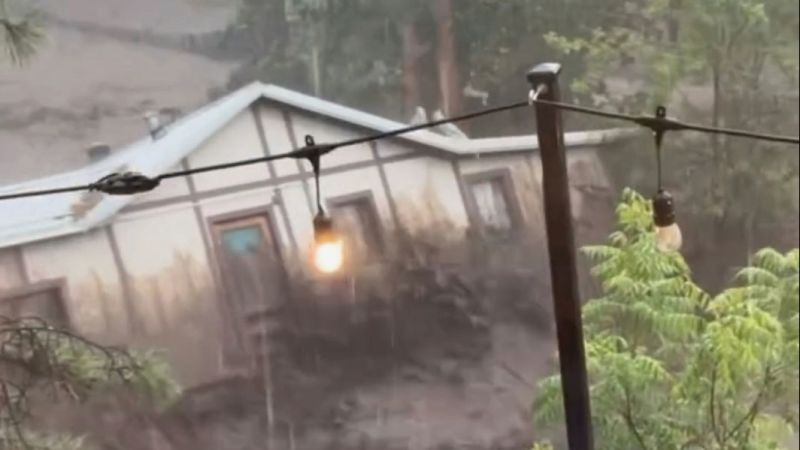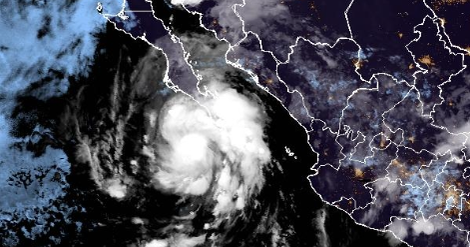Flash Floods Kill 3 in New Mexico, Including Two Children; State Declares Emergency
At least three people, including two children, were killed after torrential rainfall triggered catastrophic flash flooding in New Mexico on Tuesday, July 8, prompting Governor Michelle Lujan Grisham to declare a state of emergency in affected areas.
The Village of Ruidoso, a scenic mountain town approximately 180 miles southeast of Albuquerque, confirmed the fatalities in an official statement. According to village officials, the victims — a middle-aged man, a 4-year-old girl, and a 7-year-old boy — were swept away by fast-moving floodwaters and later found downstream. The Rio Ruidoso, which runs through the town, surged to a record-breaking 20 feet, surpassing its previous high by five feet.
Mayor Calls It a ‘Terrible Tragedy’
Ruidoso Mayor Lynn Crawford expressed deep sorrow over the incident, stating:
“Our hearts are broken for the families who have lost their loved ones in this terrible tragedy. The entire Village of Ruidoso extends our deepest sympathy and compassion to these grieving families during this unimaginably difficult time. We are united in our sorrow and our commitment to supporting one another as we face this devastating loss together.”
Rescues, Mudslides, and Infrastructure Damage
The intense flooding stranded residents in their homes and led to multiple water rescues throughout the area. The situation was exacerbated by “burn scars” — regions of scorched earth left behind by two major wildfires in 2024 — which made the land highly vulnerable to rapid runoff and mudslides.
Mayor Crawford, speaking on a local radio broadcast, confirmed widespread damage, including gas leaks, homes destroyed or displaced, and several bridges either severely damaged or submerged.
Emergency Alerts and Weather Warnings
At around 3:00 p.m. local time on July 8, the National Weather Service (NWS) in Albuquerque issued a flash flood emergency for Ruidoso, the nearby Ruidoso Downs Racetrack, and the Hollywood neighborhood. The warning remained in effect until 7:15 p.m.
“A DANGEROUS situation is unfolding in RUIDOSO! A FLASH FLOOD EMERGENCY remains in effect! Seek HIGHER GROUND NOW! Do NOT attempt to drive through the floodwaters. The current will carry away your vehicle!” warned the NWS on social media.
Continued Risk of Flooding
On the morning of Wednesday, July 9, the weather service issued another flash flood watch for the Ruidoso region. Meteorologists warned that “rich Gulf moisture” could lead to additional storms over the saturated burn scars, increasing the likelihood of more flooding through the weekend and beyond.
“The ground is already saturated from three straight days of rain. Any additional rainfall will immediately turn into runoff,” the NWS stated, noting the high probability of widespread thunderstorms throughout New Mexico.
Meteorologist Jennifer Shoemake reported that the highest measured rainfall on July 8 was 3.29 inches on the southwest side of the South Fork burn scar. Across the region, between 1.5 and 3.5 inches of rain fell, intensifying the already dangerous conditions.

Wider Devastation Across the U.S.
The tragic flooding in New Mexico adds to a broader national disaster this week, as several other states experience similar calamities.
In Texas, flash floods have killed more than 100 people, with over 160 still missing, primarily in Kerr County. The floods struck hardest on July 4, leaving widespread devastation. Camp Mystic, a well-known Christian girls’ camp on the Guadalupe River, was especially hard hit. Officials confirmed that 27 children and camp counselors were among the dead, with five campers and one counselor still unaccounted for.
In North Carolina, Tropical Storm Chantal dumped more than 10 inches of rain over the weekend, leading to flash floods and the deaths of at least four people, according to reports from the Asheville Citizen Times and the Raleigh News & Observer.
This recent wave of flooding across the U.S. underscores the increasing risk posed by extreme weather events — particularly in regions still recovering from previous wildfires, storms, or infrastructure vulnerabilities. Emergency responders, meteorologists, and local governments continue to monitor conditions and assist impacted communities.



